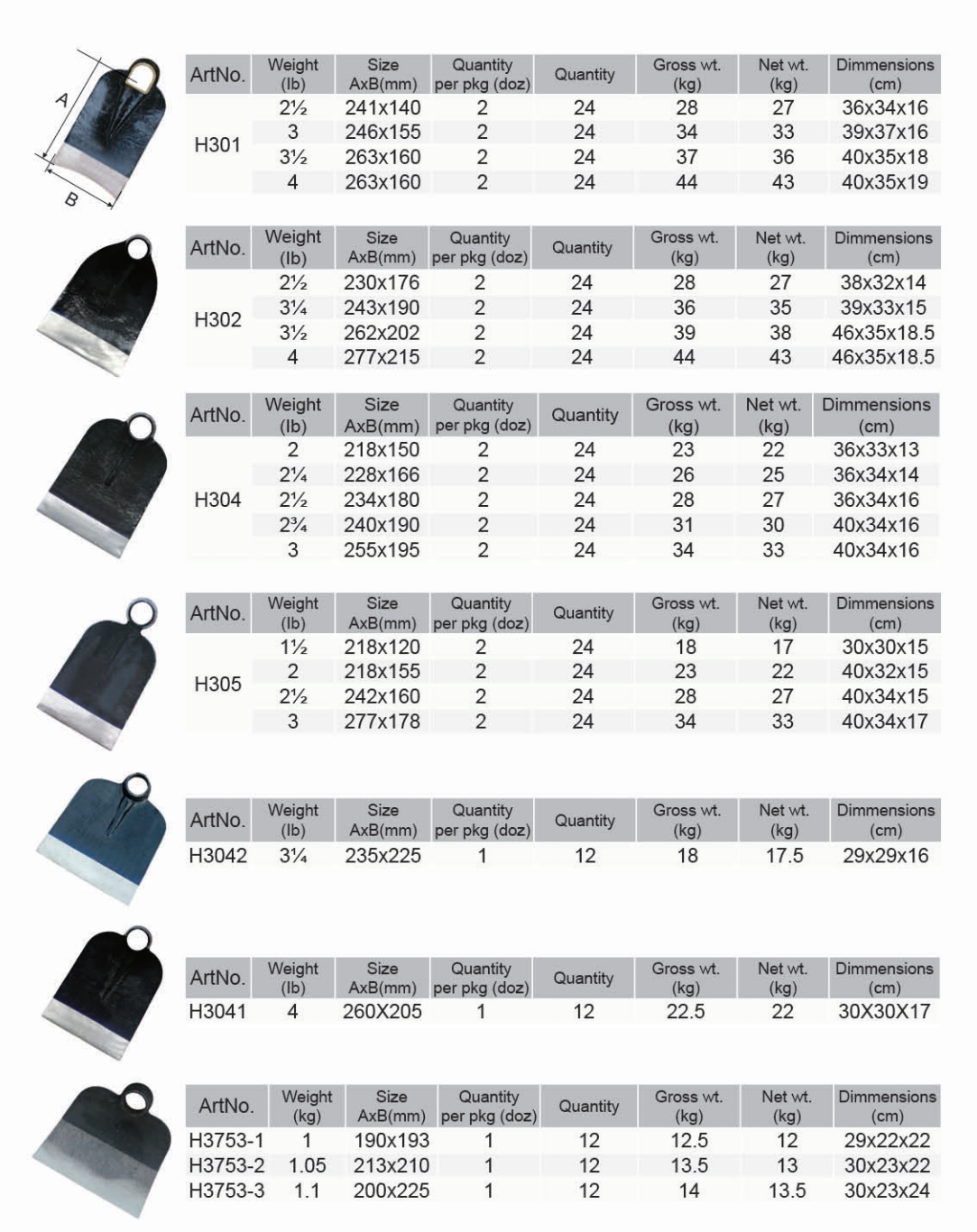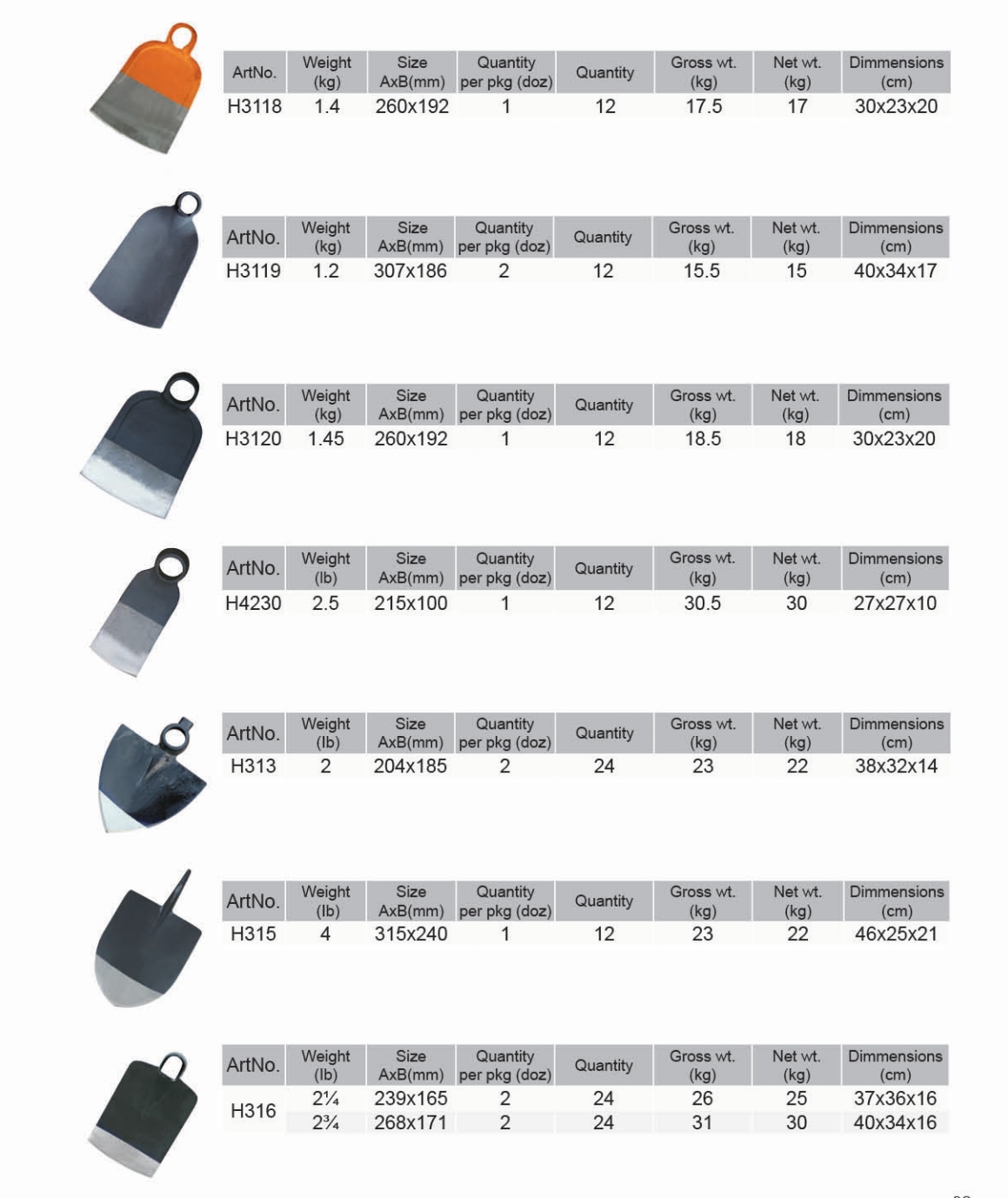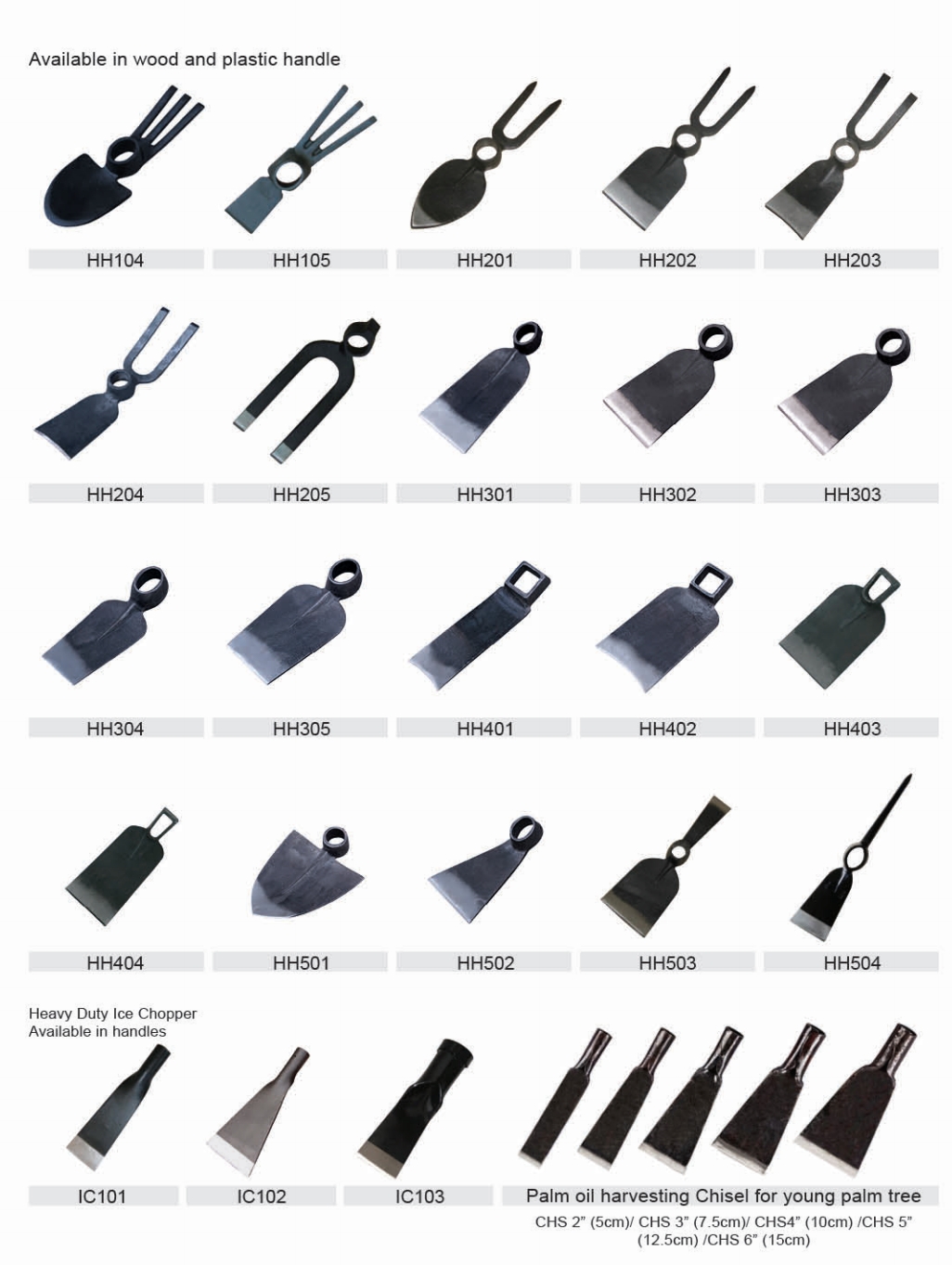News
Choosing the right grub hoe tool can make a significant difference in the daily work and productivity of African smallholder farmers. A high-quality grub hoe is not just a simple digging implement—it’s a vital partner in preparing soil, clearing land, and managing tough crops. Understanding the essential features of a good grub hoe tool helps farmers invest wisely and ensures long-lasting performance under challenging conditions. From the durability of the blade and handle materials to the design that suits different soil types, each aspect plays a crucial role. This guide will explore how to differentiate between grub hoes , highlight the best materials and construction, and offer practical tips for effective use and maintenance. Whether tackling rocky terrain or preparing seedbeds, choosing the right grub hoe tool improves efficiency, reduces physical strain, and ultimately supports better harvests. This comprehensive overview will help African farmers select the ideal grubbing hoe tool to meet their specific farming needs.

What Is a Grub Hoe and Why African Farmers Need It
A grub hoe, also known as a grubbing hoe, is a robust agricultural tool designed for digging, breaking up hard soil, and removing roots or weeds. African smallholder farmers often face challenging soil conditions, including compacted or rocky ground, making the hoe farming tool an indispensable tool. It helps prepare the land efficiently for planting, clearing debris and loosening soil to enhance aeration and water absorption. Understanding the role of the grub hoe empowers farmers to improve soil management and increase crop productivity.
Key Features to Look for in a High-Quality Grub Hoe Tool
Selecting a reliable grub hoe tool means considering blade strength, handle durability, and overall design. The blade should be made of hardened steel to withstand tough soil and roots without bending or dulling. Handles crafted from strong hardwood or reinforced materials offer better grip and shock absorption. The tool’s weight balance and blade shape influence how effectively it penetrates soil. A well-made grub hoe reduces fatigue and improves precision, making farm work more manageable and productive.
Differences Between Grub Hoe and Grubbing Hoe Explained
Though often used interchangeably, grub hoe and grubbing hoe sometimes refer to slight variations in design or regional terminology. Both tools serve similar purposes in soil preparation and root removal. However, a grubbing hoe may have a heavier blade and a sturdier build for tougher grubbing tasks, while a grub hoe could be slightly lighter for general digging and breaking soil. Knowing these differences helps farmers select the best tool for their specific field conditions.
How to Use a Grub Hoe Tool Effectively for Land Preparation
Proper technique is essential to maximize the grub hoe tool’s effectiveness. Start by holding the handle firmly with both hands, positioning the blade at an angle to the soil. Use controlled, downward chopping motions to break up compacted earth and remove roots or stones. Avoid excessive force that can damage the tool or cause fatigue. Regularly clearing debris from the blade ensures smooth operation. Effective use saves time and prepares the land optimally for planting.
Choosing the Right Grubbing Hoe for Tough African Soils
African soils vary from sandy to heavy clay and rocky terrains. Selecting a grubbing hoe tailored to the soil type improves efficiency. For hard, rocky soils, a tool with a thicker, reinforced blade and a solid handle withstands impact better. Lightweight hoes suit sandy or looser soils, providing easier handling. Understanding local soil conditions and farming tasks guides farmers to the right hoe tool in agriculture for their needs.

Maintenance Tips to Prolong the Life of Your Grub Hoe Tool
Proper care keeps a grub hoe tool functional and safe for years. After each use, clean dirt and moisture from the blade and handle to prevent rust and decay. Sharpen the blade regularly with a file or grinder to maintain cutting efficiency. Inspect the handle for cracks or splinters and replace it if damaged. Store the tool in a dry, sheltered place. Consistent maintenance reduces repair costs and improves farming productivity.
Affordable Grubbing Hoes: Best Options for Smallholder Farmers
Budget-friendly grubbing hoes can deliver excellent value when selected carefully. Look for tools that balance cost with quality materials and craftsmanship. Local manufacturers often offer durable hoes at competitive prices, sometimes tailored for African farming conditions. Avoid overly cheap options with low-quality steel or weak handles, as they wear out quickly and cost more in the long run. Investing in a well-made affordable grubbing hoe maximizes returns for smallholder farmers.
Common Mistakes When Using a Grub Hoe and How to Avoid Them
Many farmers misuse grub hoes by applying excessive force or incorrect angles, leading to early tool damage or personal injury. Swinging wildly or twisting the blade stresses the handle and blade connection. Neglecting tool cleaning causes rust buildup and dullness. To avoid these mistakes, farmers should use controlled, purposeful motions, maintain the tool regularly, and follow ergonomic principles to reduce strain. Proper use extends the tool’s lifespan and protects user health.
How Grub Hoe Tools Improve Crop Yields in African Farming
A well-chosen grub hoe tool enhances soil preparation, which is fundamental to crop health and yields. By breaking compacted soil and removing weeds and roots efficiently, grub hoes improve seedbed quality and root growth conditions. Better aeration and moisture retention result in stronger plants and higher productivity. For smallholder farmers, effective land preparation with the right action garden hoe directly contributes to food security and income stability.
Where to Buy Reliable Grubbing Hoe Tools in Africa
Finding dependable grubbing hoes locally or through trusted suppliers ensures farmers get quality tools suited to their needs. Regional agricultural markets, hardware stores, and specialized farm tool vendors often stock these tools. Some manufacturers provide direct sales or online ordering options with shipping across Africa. Choosing suppliers with good reviews and warranties reduces risks of buying substandard products. Reliable sourcing supports sustainable farming investments.

| Product Name | Material | Color | Size (Length) | Blade Dimensions (L×W) | Handle Material | Weight (kg) | Specifications |
|---|---|---|---|---|---|---|---|
| Classic Grub Hoe | High Carbon Steel | Black | 120 cm | 30 cm × 15 cm | Hardwood | 2.5 | Sharp blade, durable handle |
| Heavy-Duty Grubbing Hoe | Forged Steel | Dark Grey | 130 cm | 35 cm × 18 cm | Fiberglass Reinforced | 3.2 | Rust resistant, ergonomic grip |
| Lightweight Grub Hoe | Alloy Steel | Metallic | 110 cm | 28 cm × 14 cm | Bamboo | 1.8 | Suitable for soft soil |
| Multi-Purpose Grub Hoe Tool | Stainless Steel | Silver | 125 cm | 32 cm × 16 cm | Hardwood | 2.7 | Corrosion resistant, balanced |
| Economy Grub Hoe | Carbon Steel | Matte Black | 115 cm | 29 cm × 15 cm | Plastic Reinforced | 2.3 | Cost-effective, durable blade |
About us:
Dingzhou Gemlight Cutting Tools Co., Ltd.
With over 30 years of manufacturing expertise and 20+ years of export experience to Africa, Southeast Asia, and Latin America,
Gemlight is your trusted partner in agricultural and machete tools.
We specialize in producing high-quality machetes, shovels, hoes, pickaxes, and sickles, with a strong focus on durability and performance.
Factory based in Baoding, Hebei, China, we ensure fast delivery, competitive pricing, and customized OEM/ODM solutions.
Trusted by customers in 50+ countries.
Wholesale inquiries welcome.
E-mail: ganzhedao@gmail.com Whatsapp: +86 139 3323 5088

 Sitemap
Sitemap